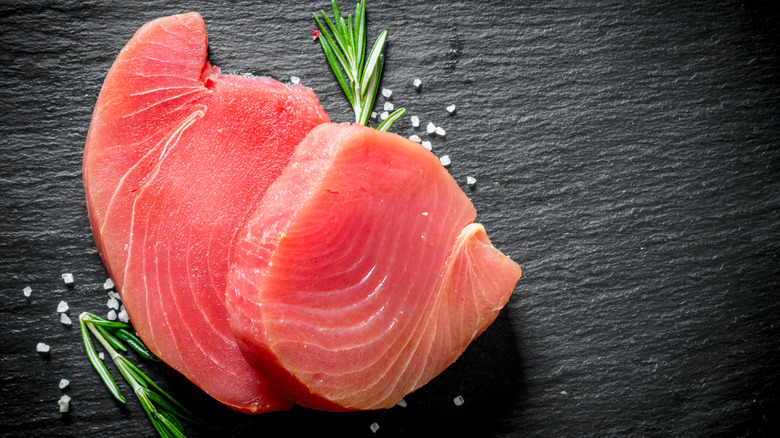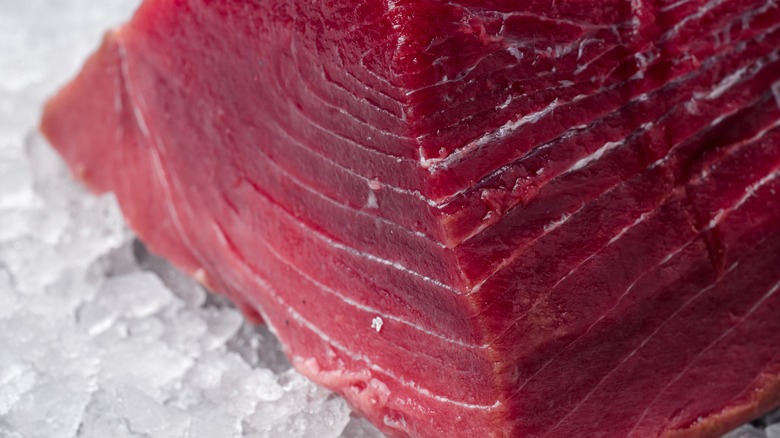The Science Behind Fresh Tuna's Vibrant Red Color
Tuna is one of the most versatile fish in the ocean, the single priciest you can buy (if you're talking about sushi-grade tuna), and also one of the cheapest (if you're talking about the canned stuff). But aside from just being known for versatility and tastiness, it's also known for something else: Its signature bright red color, which arguably makes it the most visually distinct fish and is part of why it stands out so much on a sushi platter.
But why is tuna red, anyway? The answer has to do with tuna anatomy and a variety of ways it's surprisingly similar to mammalian physiology relative to other fish, but primarily thanks to the prevalence of myoglobin in its meat (something most fish don't have in large quantities), owing to its status as a predator. As a secondary question, does this mean tuna counts as red meat? Well, that depends on who you ask.
Tuna is red because of a specific protein
People make the mistake of assuming that beef steaks are red because they're filled with blood, but they aren't. That's actually due to myoglobin. Myoglobin's job is to store oxygen that muscle cells can use for energy, and it'll be released into the bloodstream in case of something like a heart attack — but it isn't blood.
Typically, high concentrations of myoglobin are primarily found in mammals, but this is where tuna complicates things. Tuna is unusually high in myoglobin for a fish, leading to its bright red color. Again, this isn't because its meat is bloody, and it doesn't mean tuna is fully warm-blooded like a mammal (although funny enough, it's also one of the few partially warm-blooded fish), but the myoglobin is what's causing that bright red meat.
The reason tuna has so much myoglobin is that it's unusually active for a fish, meaning it needs it: Creatures that expend more energy need to produce more energy. And tuna need more energy because they're predators, so they swim a lot in search of prey; it's no surprise that other fish with high levels of myoglobin tend to be sharks.
Does tuna count as red meat?
There's no hard answer to this question since "red meat" is itself an amorphous term. Typically, red meat means mammals and only mammals, although even then, which mammals count is up for debate. Pork is officially considered a red meat because of its higher myoglobin content relative to non-mammals, but again, whether it's red meat depends on who you talk to since pork has been advertised as "the other white meat" for years.
So, does tuna's higher myoglobin and corresponding bright red color — not to mention its meaty texture relative to salmon or cod — mean it's a red meat? Again, you'll kind of have to answer this one for yourself. It's much leaner than anything else considered red meat, but it's also fattier than most things regarded as white meat.
There's a case to be made for both sides here, and it's honestly surprising that "Is tuna red meat" hasn't become an internet debate along the lines of "Is a hot dog a sandwich?" But whether it's red meat or not, it's definitely red in color — and it has myoglobin to thank for it.


